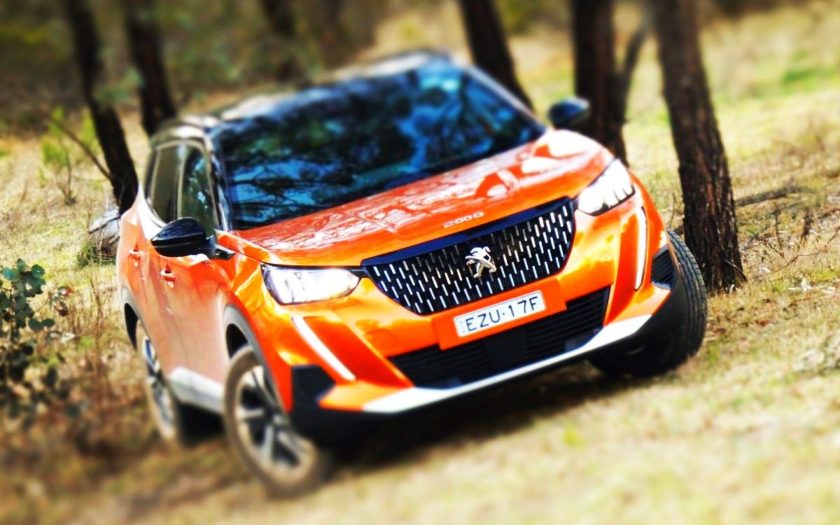Chris Riley tests the 2023 Peugeot 2008 GT small SUV with pricing, specs, ride and handling, safety, verdict and everything the over-50 driver needs to know.
Summary: The Peugeot 2008 is fighting in a crowded and competitive segment. Peugeot’s fiddling with specs to separate models within its own range have meant some features are deleted, or cost extra.
2023 Peugeot 2008 GT small SUV
Pricing: $43,397 (plus on road costs)
Options: Tech Pack (sat nav, larger screen) $1990, sunroof $1990
Warranty: Five-years/unlimited km, five-years roadside assist, five
Safety: Five-star ANCAP (tested 2019)
Build location: Spain
Engine: 1.2-litre turbo intercooled three-cylinder petrol
Power: 96kW @ 5500rpm
Torque: 230Nm @ 1500rpm
Transmission: 6-speed automatic, front-wheel drive
Body: 4300mm (long); 1770mm (wide); 1550mm (high)
Kerb Weight: 1247kg
Braked towing capacity: 1200kg
Wheels: 17-inch alloy
Tyres: 215/60 R17
Spare wheel: space saver
Ground clearance: 174mm
Turning circle: 10.4m
Fuel tank capacity: 44 litres
Official consumption: 6.5L/100km (95 RON premium unleaded)
Consumption on test: 6.7L/100km (800km)
seniordriver consumption on test: not tested
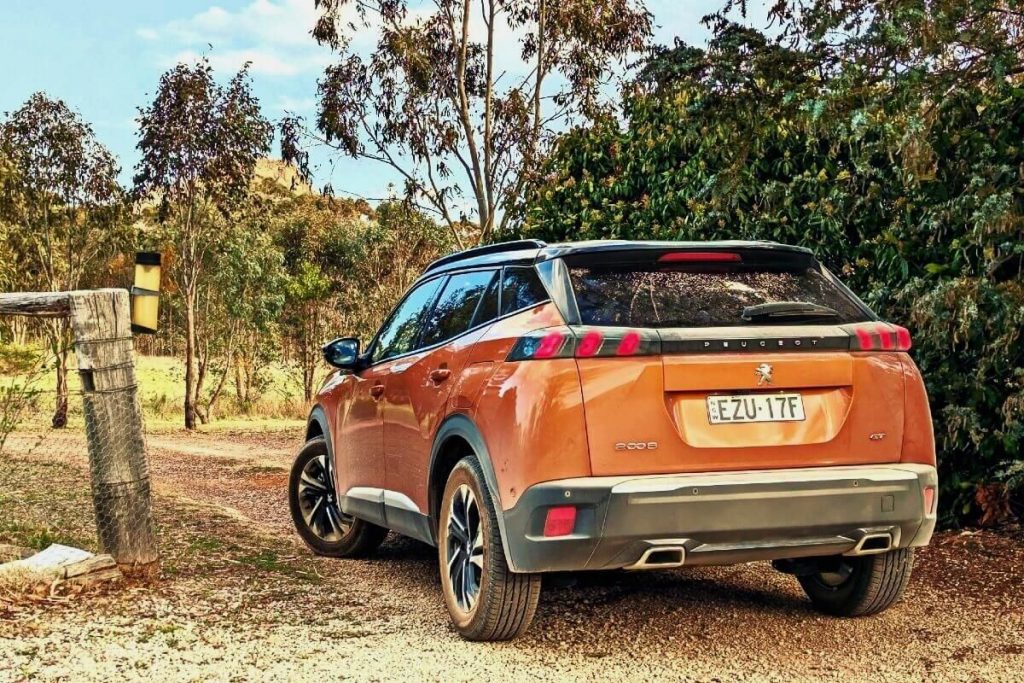
[review]
In the absence of the 208 hatch, the 2008 has become by default the baby of the Peugeot range.
But it’s a baby that the French company can justifiably be proud of, at once stylish, fun to drive and technologically advanced.
Even better, it uses very little fuel.
What’s not to like? Read on.
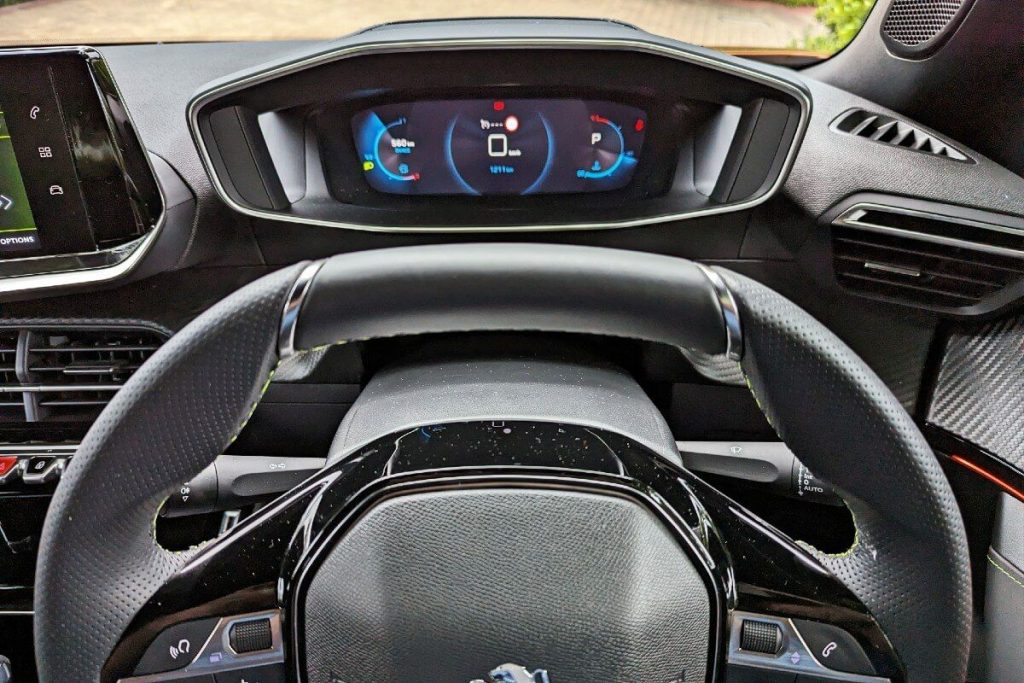
What’s it cost?
Peugeot has rationalised the 2008 small SUV range with the launch of its first ever, fully-electric passenger model, the $60,000 e-2008.
The GT Sport has been culled, with the entry Allure grade now starting from $38,945, the GT from $43,397 and the e-2008 from $59,990, all before on-road costs.
Until recently the GT Sport sat $4000 above the GT, with more power, more gears and more equipment.
But the story doesn’t end there, because some equipment has also been removed from the GT and is now available only with the e-2008, no doubt to make it a more attractive proposition.
At the top of that list is satellite navigation, previously standard.
You can of course use your mobile phone along with Apple CarPlay or Android Auto for the purposes of navigation, but that doesn’t always work well, especially without phone reception.
In our case, it’s a moot point, because Android Auto simply refused to connect anyway.
A factory reset of the car was necessary.
The 10.0-inch touchscreen has also been downsized to the smaller 7.0-inch unit from Allure and a smaller screen means a smaller camera which by the way is terrible at night.
You can re-add satnav and a larger screen, but it will cost $1990 as part of the Tech Pack.
Single zone climate air remains, but Alcantara replaces the previous fabric trim along with a different coloured stitching, with real leather for the steering wheel and transmission lever.
We’ve asked Peugeot for a full list of the changes.
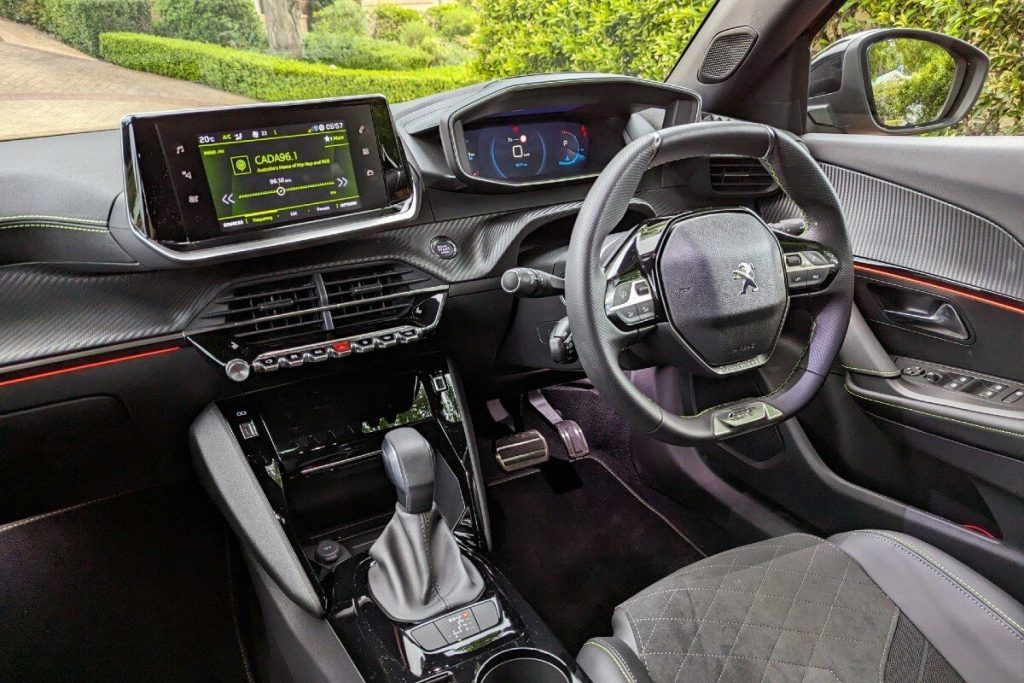
Be that as it may, the 2008 remains an attractive package, with a comprehensive list of safety features.
There’s 17-inch alloys, two-tone paint, full privacy glass, keyless entry and start, walk-away locking, electric parking brake, LED head and daytime running lights, the former with auto high beam, 180-degree reversing camera with overhead view, auto lights and wipers, front and rear parking sensors and a frameless auto dimming rear view mirror.
Inside, you’ll find Peugeot’s signature 3D i-Cockpit instrument panel, aluminium pedals, LED lighting, eight-colour ambient lighting, 7.0-inch colour infotainment touchscreen and the aforementioned Alcantara with green-coloured stitching.
The front seats are heated with power adjustment for the driver seat, which includes lumbar and massage (all previously part of an option pack).
A sunroof adds $1990.
Infotainment consists of a 7.0-inch touchscreen with six-speaker audio, Bluetooth, voice recognition for phone and radio, FM/DAB+ digital radio, wired Apple CarPlay and Android Auto and a wireless charge pad.
There’s a USB-A and USB-C socket in the front, two USB-A sockets in the rear and a 12-volt outlet.
Five-star safety consists of six airbags, a rear-view camera, autonomous emergency braking and advanced grip control with snow, sand and mud modes.
There’s also driver attention alert, forward collision warning, blind spot warning, lane departure warning, lane keeping assistance, in-crash braking, auto hazard light activation and tyre pressure monitoring.
Missing is rear cross traffic alert and the camera as mentioned does not encompass a full 360-degrees.
Two ISOFIX child seat anchors along with three top tethers are provided.
2008 comes with a five-year unlimited kilometre warranty, five-year roadside assistance and five-year fixed price servicing.
Service is required every 15,000km or 12 months and averages $494 per year over five years.
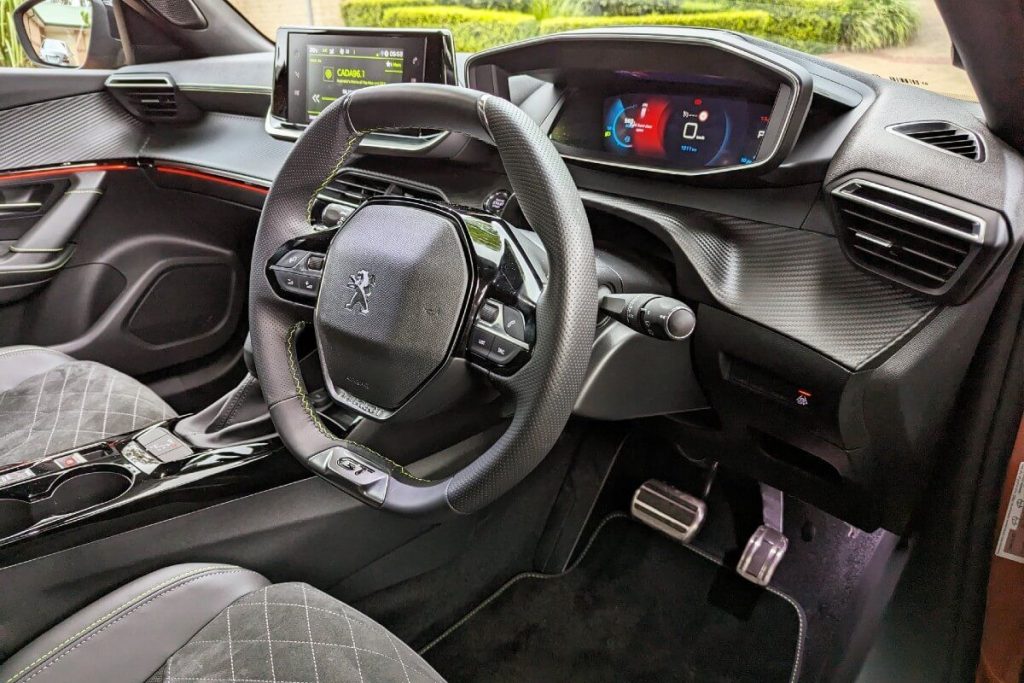
What’s it go like?
The 2008 is a genuine work of automotive art.
The detail that has gone into the design is amazing with a black roof, concave radiator grille, sculpted front fascia and sharply plunging LED lights.
Look closely and you will see even the surface of the doors has been pinched together to form three different opposing planes.
Built on the Common Modular Platform (CMP) the second generation 2008 is 4300mm long with a 2605mm wheelbase and weighs 1247kg.
It seats five, but realistically has room for two adults in the back, with limited legroom and even less space for feet.
A larger than expected boot holds 434 litres with the back seat raised, and an impressive 1467 litres with the seats dropped.
The 2008 features the latest-generation 3D i-Cockpit complete with configurable head-up 3D instrument panel display, high-definition colour touchscreen and compact multi-function steering wheel.
It’s powered by a 1.2-litre, turbocharged, three-cylinder PureTech 130 engine that produces 96kW of power at 5500 rpm and 230Nm of torque at 1750 rpm.
It is paired with an Aisin six-speed Efficient Automatic Transmission (EAT6) with drive to the front wheels, plus snow, sand and mud drive modes from which to choose.
Suspension is pseudo-MacPherson struts at front with a deformable cross member at the rear, and it rides on 17-inch wheels with 215/60 series rubber, and it has a space saver in the boot.
With a 44-litre tank, it takes 95 premium unleaded, uses a claimed 6.5L/100km of fuel and produces 148g/km of CO2.
We were getting 6.7L/100km after more than 800km of city and country driving.
While the 1.2-litre engine may sound tiny, the 2008 is actually quite zippy and fun to drive, and can easily hold its own in traffic.
Top speed is 199km/h and the dash from zero to 100km/h takes 9.3 seconds, which is three tenths slower than the e-2008.
But both are slower than the GT Sport which was good for 8.7 seconds.
Again, with more power and torque (114kW/240Nm), Peugeot wouldn’t want the Sport overshadowing the performance of the e-2008.
Ride quality is generally good, but reveals a lack of local tuning as it deteriorates quickly on country roads, with small irregularities generating too much jitter or jarring that can be felt in the cabin.
There’s also a little bit of hop and bounce as the wagon becomes unsettled at speed.
Overtaking requires planning and plenty of room before contemplating.
Handling however is excellent as are the brakes and steering.
The car points exactly where you want it and it turns into corners eagerly.
We didn’t have occasion to use any of the snow, sand or mud modes, but spent a bit of time on dirt roads where the 2008 seemed more than happy apart from the jiggly ride.
The 3D i-Cockpit allows drivers to choose between six individual instrument panel modes, including two personalised options, but only one includes a tacho.
And, to be honest, we’re a little over the i-Cockpit with its elevated instrument cluster and tiny steering wheel.
For marginal gains at best, it makes getting in and out of the car more difficult than it should be.
The steering wheel needs to be set high to provide room for thighs when getting into the car, then needs to be dropped so the top of the steering wheel does not obscure the instrument panel, particularly the digital speedo – in any mode.
It might work for slim young things, but not for full-figured Aussie adults.
The height of the instrument panel is at best a few centimetres higher than a standard setup and the driver still needs to drop their eyes to see it.
In fact, if you add in time spent trying to avoid the steering wheel – and it actually takes eyes away from the road for longer.
Get rid of it.
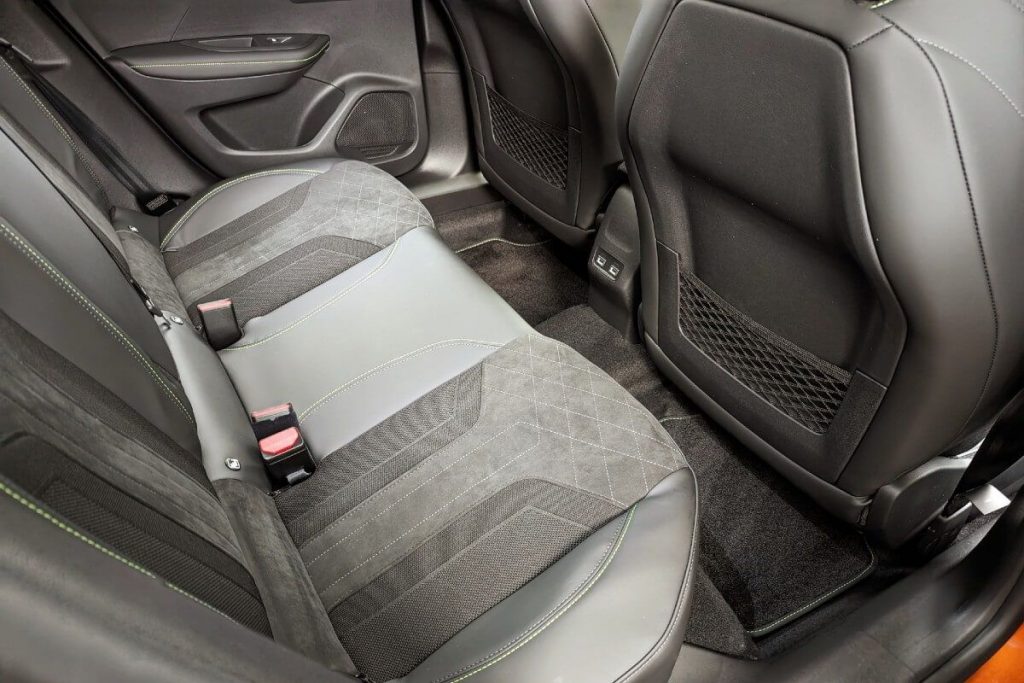
What we like
- Looks great
- Fun to drive
- Zippy performance
- Impressive handling
- Walkaway locking
What we don’t like
- Silly i-Cockpit
- Satnav removed
- Cruise control not adaptive
- Speed sign dropouts
- Dampers need a tune
- Skittish ride on country roads
What over-50s drivers need to know
The 2008 is an easy car to live with. We just don’t like the cynical way Peugeot has rejigged the lineup to make way for the expensive electric variant.
We’re basically being asked to pay the same price for the GT as we once did for the GT Sport – but with less power and less equipment.
It’s okay to price your cars up, but please don’t spec them down.
No thanks.
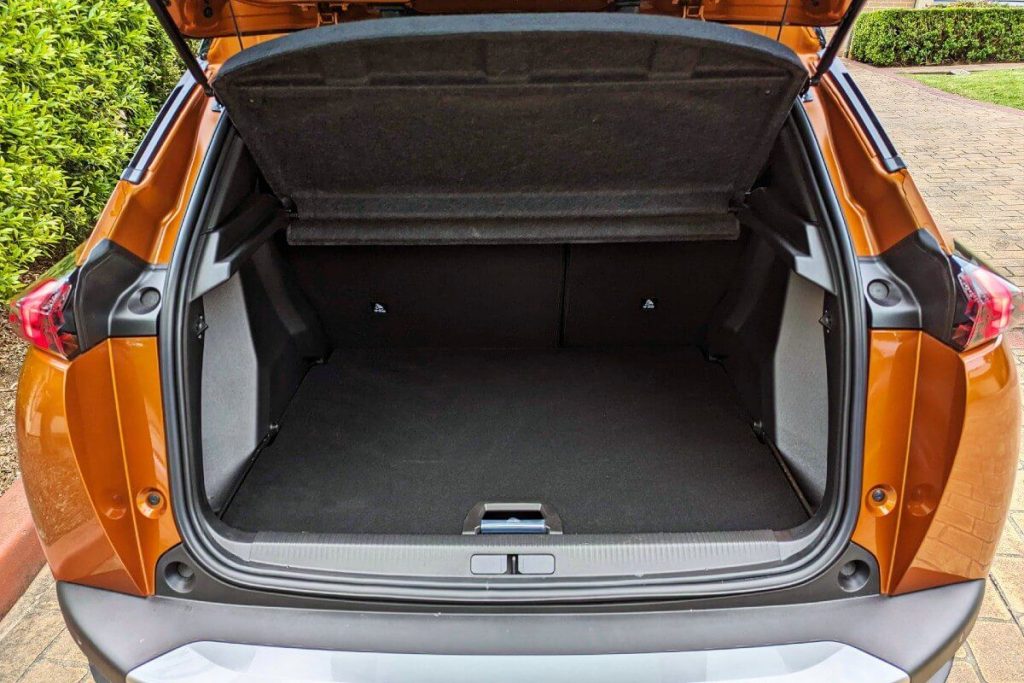
seniordriver comments
It’s been quite some time since seniordriveraus drove the Peugeot 2008 and we recall the same frustrations raised by Chris – specifically, the silly i-Cockpit and the tiny steering wheel. It all sounds good in theory, but fails to impress in practice.
The absence of rear cross traffic alert and a camera that doesn’t cover the full 360-degrees are of some concern.
Peugeot’s decision to change specifications (and that rarely means adding features!) is disappointing. The smaller touchscreen is a backward step, as is asking buyers to cough up $1990 for the larger screen that used to be standard, and sat nav.
But the 2008 is undeniably attractive. And that little 1.2-litre three-cylinder engine delivers more fun that it has any right to.
The 2008 gets snow, sand and mud modes, so it makes a better fist of being a true SUV than many of its competitors, and the ground clearance of 174mm looks pretty good when compared to others as well.
With prices starting at $43,397 (plus on road costs), buyers will be paying a small premium for the image. Others in the class worth considering include the Citroen C4, Honda HR-V, the top-end Hyundai Kona, Jeep Compass, Volkswagen T-Roc and Skoda Kamiq.
